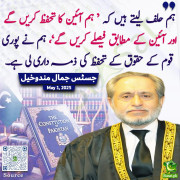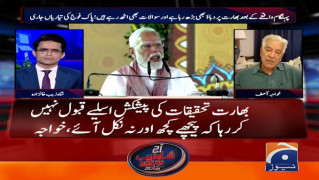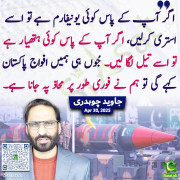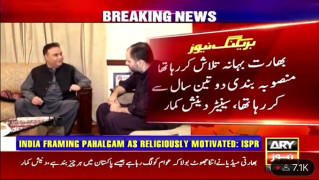[TABLE="width: 100%"]
[TR]
[TD="align: left"][h=1]
India's "Untouchables" Face Violence, Discrimination[/h]
Hillary Mayell
for National Geographic News
June 2, 2003
More than 160 million people in India are considered "Untouchable"—people tainted by their birth into a caste system that deems them impure, less than human.
Human rights abuses against these people, known as Dalits, are legion. A random sampling of headlines in mainstream Indian newspapers tells their story: "Dalit boy beaten to death for plucking flowers"; "Dalit tortured by cops for three days"; "Dalit 'witch' paraded naked in Bihar"; "Dalit killed in lock-up at Kurnool"; "7 Dalits burnt alive in caste clash"; "5 Dalits lynched in Haryana"; "Dalit woman gang-raped, paraded naked"; "Police egged on mob to lynch Dalits".
Printer Friendly
Email to a Friend
What's This?
SHARE
DiggStumbleUponReddit
RELATED
"Dalits are not allowed to drink from the same wells, attend the same temples, wear shoes in the presence of an upper caste, or drink from the same cups in tea stalls," said Smita Narula, a senior researcher with Human Rights Watch, and author of
Broken People: Caste Violence Against India's "Untouchables."Human Rights Watch is a worldwide activist organization based in New York.
India's Untouchables are relegated to the lowest jobs, and live in constant fear of being publicly humiliated, paraded naked, beaten, and raped with impunity by upper-caste Hindus seeking to keep them in their place. Merely walking through an upper-caste neighborhood is a life-threatening offense.
Nearly 90 percent of all the poor Indians and 95 percent of all the illiterate Indians are Dalits, according to figures presented at the International Dalit Conference that took place May 16 to 18 in Vancouver, Canada.
Crime Against Dalits
Statistics compiled by India's National Crime Records Bureau indicate that in the year 2000, the last year for which figures are available, 25,455 crimes were committed against Dalits. Every hour two Dalits are assaulted; every day three Dalit women are raped, two Dalits are murdered, and two Dalit homes are torched.
No one believes these numbers are anywhere close to the reality of crimes committed against Dalits. Because the police, village councils, and government officials often support the caste system, which is based on the religious teachings of Hinduism, many crimes go unreported due to fear of reprisal, intimidation by police, inability to pay bribes demanded by police, or simply the knowledge that the police will do nothing.
"There have been large-scale abuses by the police, acting in collusion with upper castes, including raids, beatings in custody, failure to charge offenders or investigate reported crimes," said Narula.
That same year, 68,160 complaints were filed against the police for activities ranging from murder, torture, and collusion in acts of atrocity, to refusal to file a complaint. Sixty two percent of the cases were dismissed as unsubstantiated; 26 police officers were convicted in court.
Despite the fact that untouchability was officially banned when India adopted its constitution in 1950, discrimination against Dalits remained so pervasive that in 1989 the government passed legislation known as The Prevention of Atrocities Act. The act specifically made it illegal to parade people naked through the streets, force them to eat feces, take away their land, foul their water, interfere with their right to vote, and burn down their homes.
Since then, the violence has escalated, largely as a result of the emergence of a grassroots human rights movement among Dalits to demand their rights and resist the dictates of untouchability, said Narula.
Continu
[/TD]
[/TR]
[/TABLE]













































